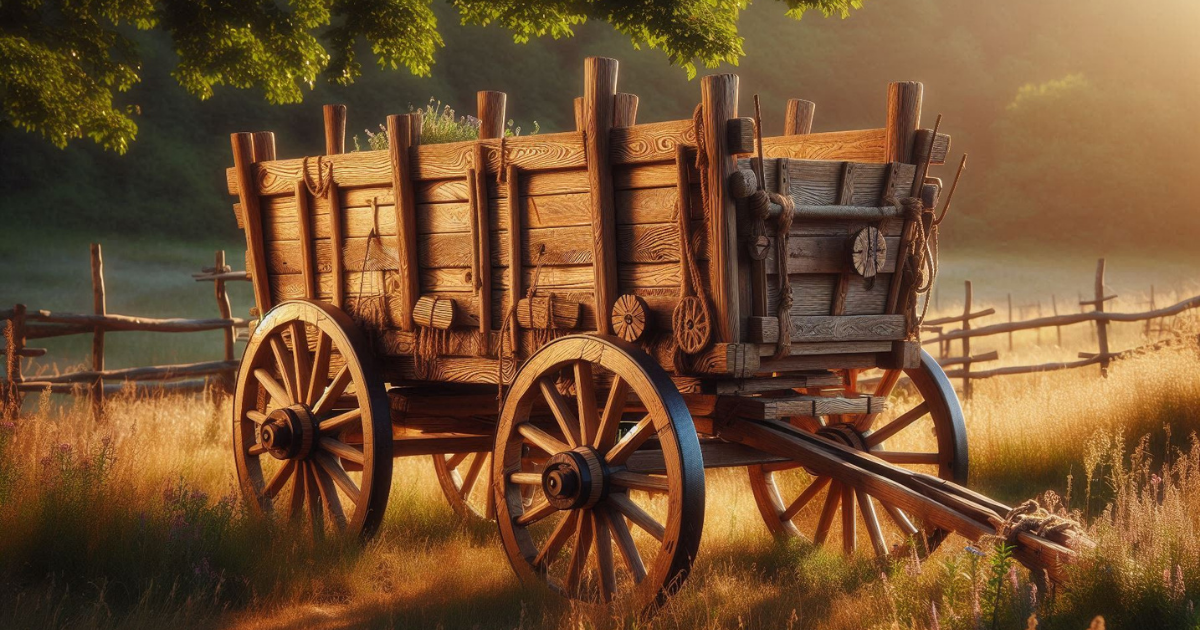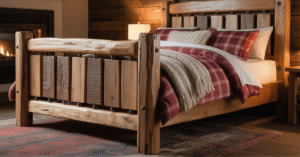Did you know a bad wooden wagon design can cause expensive fixes, lower efficiency, and safety risks? Building a wooden wagon right is key to finishing on time, staying within budget, and meeting your goals.
Many people, both hobbyists and pros, make the same errors in designing their wagons. This leads to poor performance and a short life span. Knowing the common mistakes and following the best ways can help you make a strong, useful wagon that lasts for years.
By knowing the common design errors and how to avoid them, your wagon will be both useful and long-lasting. In this article, we’ll look at the top 7 wooden wagon design mistakes to watch out for. We’ll also give you the knowledge to make a successful project.
Key Takeaways
- Understand the importance of avoiding common design mistakes in wooden wagon construction.
- Learn how to identify potential pitfalls and follow best practices.
- Discover the benefits of creating a sturdy and functional wooden wagon.
- Explore the top 7 wooden wagon design mistakes to avoid.
- Gain the knowledge to create a successful wooden wagon project.
The Critical Role of Proper Design in Wooden Wagon Construction
A well-designed wooden wagon is key. It looks good and works well. The design phase sets the stage for your project.
Understanding the Purpose and Function of Your Wagon
Know why you’re making your wagon before you start. Is it for heavy loads or just to look nice? This question shapes your design choices, like the wood and wheels.
Knowing your wagon’s purpose helps you focus on what’s important. This ensures your design meets your needs.
How Poor Planning Leads to Structural Failures
Poor planning can ruin your wagon. Ignoring load capacity, material quality, and weather can cause problems. The wrong wood or bad joinery can make your wagon weak.
By planning well, you avoid these issues. A good design makes your wagon strong and safe. It lasts longer and works better.
Mistake #1: Choosing the Wrong Type of Wood

Choosing the right wood is key for your wooden wagon’s durability and performance. The wood you pick can greatly affect how long and well your wagon works. It’s important to know the differences between various woods to make a good choice.
Softwood vs. Hardwood: Making the Right Selection
Think about how you’ll use your wagon when picking between softwood and hardwood. Softwoods like pine or cedar are cheaper and work well for parts that don’t carry a lot of weight. Hardwoods, such as oak or maple, are stronger and better for parts that do carry weight. Choosing the right wood is the first step in making sure your wagon is strong.
Moisture Resistance Properties to Consider
Moisture can harm your wooden wagon. Woods like teak or cypress that resist moisture are good for wagons that will be outside. Adding a waterproof sealant can also help keep your wagon in good shape. Knowing how different woods handle moisture is important for making a good choice.
Ideal Wood Types for Different Wagon Components
Each part of your wagon needs a specific type of wood. For example, the bed needs to be tough and not wear down easily. The wheels and axles need woods that can handle stress and friction.
Best Woods for the Wagon Bed
For the bed, use hardwoods like oak or beech. These woods are strong and can handle wear well. Oak is known for its strength and lasting quality.
Optimal Choices for Wheels and Axles
Wheels and axles need woods that are strong and can handle a lot of stress. Hardwoods like maple or ash are great because they are strong and flexible. Ash is known for its ability to absorb shocks.
By picking the right wood for each part, your wooden wagon will be both useful and last a long time. “The right wood makes a big difference in your project’s success,” say experienced wagon makers.
Mistake #2: Incorrect Wheel-to-Body Ratio
Getting the wheel-to-body ratio wrong can mess up your wooden wagon’s stability and how easy it is to move. It’s key to match the wheel size with the body size for the best results.
How Wheel Size Affects Stability, Maneuverability, and Load Capacity
The size of your wagon’s wheels is very important. Big wheels help with stability and moving on rough ground. Small wheels are better for smooth paths and tight spots. Also, bigger wheels spread out the weight better, making the wagon stronger.
Key Considerations:
- Stability: Bigger wheels make your wagon more stable, even on bumpy ground.
- Maneuverability: Smaller wheels are easier to move in tight places.
- Load Capacity: The size of the wheels affects how the weight is spread out.
Calculating the Perfect Proportions for Your Specific Wagon Type
To get the wheel-to-body ratio right, you need to figure out the best size for your wagon. Think about what you’ll use it for, where you’ll use it, and how much it will carry.
Formulas for Determining Optimal Wheel Diameter
There’s a formula to find the best wheel size based on how much it will carry and the terrain. It’s like dividing the expected load by a number that shows how tough the terrain is.
Adjusting Ratios Based on Intended Use
Changing the wheel-to-body ratio depends on what you plan to use your wagon for. For example, a wagon for heavy loads on rough ground needs a different ratio than one for light loads on smooth paths.
| Wagon Type | Ideal Wheel Diameter | Terrain |
|---|---|---|
| Heavy-Duty | 20-24 inches | Rough |
| Light-Duty | 12-16 inches | Smooth |
Mistake #3: Inadequate Axle Support System

One big mistake in making wooden wagons is not having a good axle support system. This system is key for keeping your wagon stable and lasting long. A well-made axle support system helps your wagon carry different loads without breaking down.
Common Axle Design Flaws That Lead to Premature Failure
Flaws in axle design often include too small a diameter, bad materials, and wrong mounting. These problems can cause the axle to wear out fast, leading to expensive fixes and safety risks. To fix this, choose the right materials and design the mounting system well.
Proper Bearing Selection and Installation Techniques
Choosing the right bearings and installing them correctly is key for your wagon’s axle to work smoothly. The right bearing size and type handle the expected loads well. Also, installing them right, with the right lubrication and alignment, helps them last longer.
Reinforcement Methods for Heavy-Duty Applications
For wagons that carry heavy loads, you need to strengthen the axle support system. Adding extra support brackets, using stronger materials, or adding metal sleeves to the axle can make your wagon last longer. These steps help keep your wagon strong and reliable under heavy loads.
Mistake #4: Poor Joint Construction and Fastening Methods

Poor joint construction and fastening methods can weaken your wooden wagon. The strength of your wagon depends on how well its parts are joined.
Why Relying Solely on Nails Compromises Structural Integrity
Using only nails to join wood can make your wagon weak. Nails can come loose as wood expands and contracts, making the wagon unstable.
Nails alone also raise the chance of wood splits and cracks. This weakens the structure. It’s key to use other fastening methods for a strong wagon.
Superior Joinery Techniques for Long-Lasting Wagons
Using top-notch joinery techniques can make your wooden wagon last longer. Methods like mortise and tenon, dovetail, and dado joints are stronger than nails.
| Joinery Technique | Description | Benefits |
|---|---|---|
| Mortise and Tenon | A joint where one piece fits into a recessed area of another | High strength, resistant to pull-out forces |
| Dovetail | Interlocking joints that resist being pulled apart | Strong, visually appealing, and resistant to tension |
| Dado | A slot cut into one piece to accept another | Easy to construct, provides strong support for shelves or frames |
Waterproofing and Reinforcing Critical Connection Points
Waterproofing and reinforcing key connection points are vital for your wooden wagon’s integrity. Using waterproof adhesives and sealants can stop moisture damage.
Reinforcement techniques, like adding metal brackets or using strong wood glue, boost joint durability. Regular checks and upkeep of these areas can also extend your wagon’s life.
Mistake #5: Ignoring Load Distribution Principles

Ignoring load distribution can cause wooden wagons to wear out quickly. When weight isn’t spread evenly, some parts get too much stress. This can damage the wagon over time.
How Improper Weight Distribution Causes Premature Wear and Failure
Bad weight distribution puts uneven stress on the wagon. This can wear out the frame, wheels, and axles too soon. For example, too much weight at the front or back can bend or break the axles.
Designing Strategic Support Points for Balanced Weight Capacity
To fix this, design support points that can handle cargo weight. Plan a balanced weight distribution based on your cargo and terrain.
Creating Load-Bearing Zones in Your Wagon Bed
Make load-bearing zones in your wagon bed to distribute weight better. Reinforce certain areas to handle heavy loads. This ensures the weight is spread out evenly.
Testing Weight Distribution Before Finalizing Design
Test your wagon’s weight distribution before you finalize it. Load it with the heaviest cargo you plan to carry. Check for any signs of stress or strain on the wagon’s parts.
By following these tips, you can make a durable and functional wooden wagon. It will serve you well for many years.
Mistake #6: Neglecting Proper Finishing and Weatherproofing

Not finishing and weatherproofing your wooden wagon can cause it to wear out fast. It’s important to protect it from rain, sun, and extreme temperatures. This keeps your wagon looking good for a long time.
To avoid this mistake, you need to know about finishing and weatherproofing. This means picking the right sealants and finishes, applying them right, and keeping your wagon up to date.
Selecting Appropriate Sealants and Finishes for Different Environments
The right sealants and finishes depend on where you’ll use your wagon. For example, if it’s going to get a lot of rain or snow, you need something waterproof. For dry places, a finish that protects against UV rays is better.
- Waterproof sealants for wet conditions
- UV-resistant finishes for dry, sunny conditions
- Breathable finishes for wagons stored in humid environments
Application Techniques That Ensure Maximum Protection
How you apply sealants and finishes is just as important as what you use. Make sure the wood is clean and dry first. Then, follow the instructions on the product for how to apply and dry.
- Prepare the surface by cleaning and sanding
- Apply the sealant or finish according to the manufacturer’s instructions
- Allow adequate drying time before exposing the wagon to the elements
Developing a Seasonal Maintenance Schedule for Longevity
Regular care is crucial for your wooden wagon’s longevity. Create a schedule to check and maintain your wagon. This includes reapplying sealants and finishes when needed.
By following these tips, your wooden wagon will stay in great shape for many years. This saves you from the expensive fixes that come from neglect.
Mistake #7: Overlooking Steering Mechanism Design

When making a wooden wagon, the steering mechanism is often ignored. A bad design can make it hard to steer and control. This can hurt the wagon’s performance and safety.
The steering mechanism is key for smooth turns and stability. A good design means your wagon will turn smoothly. But a bad one can cause jerky movements and accidents.
Fixed vs. Pivoting Front Axle: Making the Right Choice
The front axle type greatly affects steering. A fixed axle gives stability but limits turning. A pivoting axle allows tighter turns but needs careful design to stay stable.
Think about your wagon’s use when choosing an axle. For heavy loads, a pivoting axle is better for control and flexibility.
Engineering a Responsive Yet Stable Steering System
A good steering system is vital for tight spaces and quick turns. The parts must be well-made for smooth, consistent turns.
Pivot Point Placement for Optimal Turning Radius
The pivot point’s location is key for tight turns. The right spot ensures your wagon turns well without losing stability.
Preventing Steering Component Failure Under Stress
Steering parts face a lot of stress, like during sharp turns. Use high-quality materials and design them to handle stress.
By focusing on the steering design and axle choice, you can make a wagon that turns well and stays stable.
Essential Tools and Materials for Wooden Wagon Design Success

Building a wooden wagon that works well and lasts requires picking the right tools and materials. It’s key to focus on precise measurements and top-notch hardware for success.
Must-Have Tools for Precision Measurement and Construction
You’ll need specific tools for accurate wooden wagon design. A high-quality tape measure, a precision square, and a chisel set are must-haves. These tools help you make precise cuts and measurements, leading to a strong and well-made wagon.
As master craftsmen say, the right tools are vital for quality work. “A good craftsman is known by his tools,” they often quote.
Quality Hardware and Materials That Ensure Durability
Choosing the right hardware and materials is also key for a durable wagon. Use durable hardwoods, rust-resistant hardware, and weather-resistant finishes. This ensures your wagon can handle regular use.
According to
“The best way to get good ideas is to get a lot of ideas.” – Linus Pauling
, trying out different materials and designs can lead to the perfect wagon.
Wooden Wagon Design Mistakes to Avoid: Expert Tips and Tricks
To make a wooden wagon last long, you must avoid common mistakes. These errors can weaken your wagon. You need knowledge, experience, and detail to avoid these pitfalls.
Experts say knowing your wagon’s purpose is key. This helps you spot and fix design flaws early.
Professional Insights from Master Wagon Builders
Choosing the right wood is crucial, master wagon builders say. The wrong wood can cause your wagon to fail and not last long. Softwoods like pine are cheaper but not as strong as hardwoods like oak. Pick wood that can handle your wagon’s environment.
Scale Model Testing: Validating Your Design Before Full Construction
Testing a scale model before building the real thing is wise. It saves time, money, and materials. Scale model testing lets you check your design, make changes, and ensure your wagon works well. It helps you avoid expensive mistakes.
Using expert advice in your design can make your wagon both useful and long-lasting. Remember, careful planning, attention to detail, and testing are the secrets to a great wooden wagon.
🛠️ Want to Build Your Own Wooden Wagon?
Don’t just dream it—build it with confidence using Ted’s Woodworking, the world’s largest collection of 16,000 woodworking plans! Whether you’re crafting a rustic wagon or outdoor décor, these plans make it simple.
✅ Why Ted’s Woodworking is a Game-Changer:
- 🔨 16,000+ Plans – Includes ready-to-build wagon designs.
- 📐 Step-by-Step Instructions – Clear and beginner-friendly.
- 🧰 For All Skill Levels – No fancy tools or workshop needed.
- 💡 Includes Cut Lists & 3D Diagrams – Build fast, with no guesswork.
- 🎁 BONUS: 150 video tutorials + free lifetime plan updates!
🎯 Turn your wooden wagon idea into a professional-grade project.
👉 Get Instant Access to Ted’s Woodworking for just $67
(One-time payment – No monthly fees – 60-day risk-free guarantee!)
Conclusion: Building Your Wooden Wagon with Confidence
Now you know what mistakes to avoid when building a wooden wagon. You can start your project with confidence. By focusing on design, choosing the right materials, and following best practices, you’ll make a sturdy wagon.
Remember, a successful wagon design avoids common errors. These include picking the wrong wood, a bad wheel-to-body ratio, and poor axle support. By following these tips, your wagon will meet your needs and last long.
With careful planning and a focus on quality, you can make a wagon that lasts for years. This article’s advice will help you overcome design challenges. You’ll be proud to own your wooden wagon.
FAQ
What are the most common mistakes to avoid in wooden wagon design?
Common mistakes include picking the wrong wood and a bad wheel-to-body ratio. Also, ignore the axle support, joints, and load distribution. Don’t forget about finishing, weatherproofing, and steering design.
How do I select the right type of wood for my wooden wagon?
Choose wood based on the wagon’s use and the environment it will face. Use softwoods like pine for frames and hardwoods like oak for load-bearing parts.
What is the ideal wheel-to-body ratio for a wooden wagon?
The wheel-to-body ratio depends on the wagon’s use and load. A bigger wheel can make it more stable but might carry less weight.
How do I ensure proper axle support for my wooden wagon?
Pick the right bearing and install it well. Make sure the axle is strong for heavy loads. Avoid common mistakes like bad bearing support and poor installation.
What are the best joinery techniques for wooden wagon construction?
Use mortise and tenon, dovetail, and dado joints. They make the wagon strong and last longer.
How do I distribute the load evenly in my wooden wagon?
Design support points like suspension systems. This balances the weight and prevents wear.
What are the best finishes and sealants for protecting my wooden wagon?
Choose finishes and sealants based on the environment and use. Look for waterproof and UV-resistant options to protect against damage.
How do I maintain my wooden wagon to ensure longevity?
Create a maintenance schedule. Check and fix joints, reapply finishes, and look for damage. Regular care extends the wagon’s life.
What are the essential tools and materials for wooden wagon design?
You’ll need precise tools like table saws and drill presses. Also, use quality materials like strong woods and reliable bearings.
How can I validate my wooden wagon design before full construction?
Test your design with a scale model. This lets you check functionality and make changes before building the real thing.






